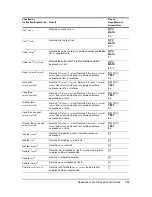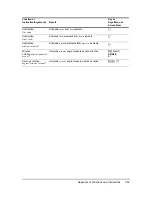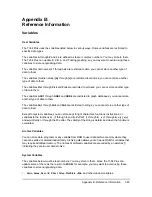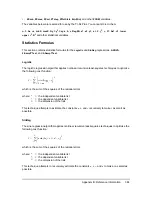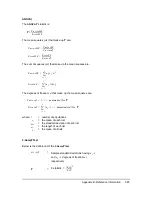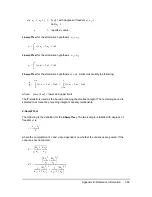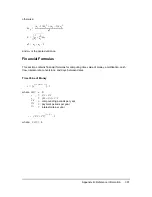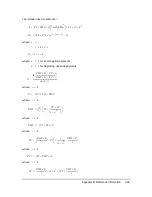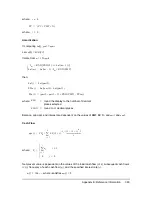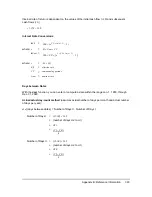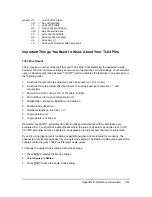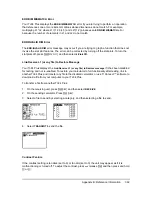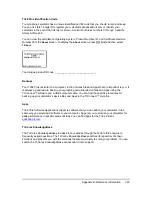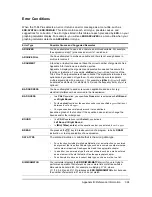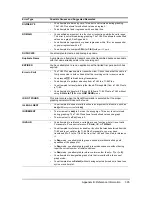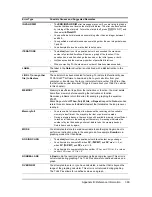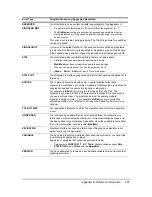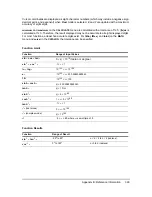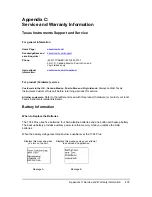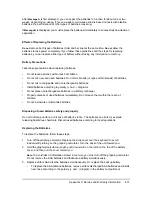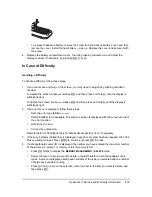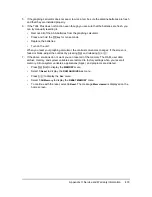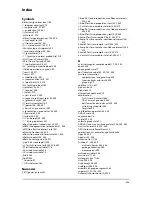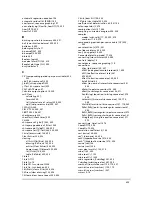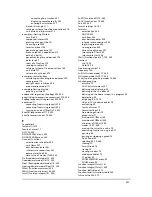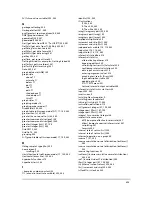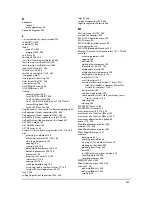
Appendix B: Reference Information
394
Error Conditions
When the TI-84 Plus detects an error, it returns an error message as a menu title, such as
ERR:SYNTAX
or
ERR:DOMAIN
. This table contains each error type, possible causes, and
suggestions for correction. The error types listed in this table are each preceded by
ERR:
on your
graphing calculator display. For example, you will see
ERR:ARCHIVED
as a menu title when your
graphing calculator detects an
ARCHIVED
error type.
Error Type
Possible Causes and Suggested Remedies
ARCHIVED
You have attempted to use, edit, or delete an archived variable. For example,
the expression dim(L1) produces an error if L1 is archived.
ARCHIVE FULL
You have attempted to archive a variable and there is not enough space in
archive to receive it.
ARGUMENT
A function or instruction does not have the correct number of arguments. See
Appendix A for function and instruction syntax.
Appendix A displays the arguments and punctuation needed to execute the
function or instruction. For example,
stdDev(
list
[,
freqlist
]
)
is a function of the
TI-84 Plus. The arguments are shown in italics. The arguments in brackets are
optional and you need not type them. You must also be sure to separate
multiple arguments with a comma (,). For example,
stdDev(
list
[,
freqlist
]
)
might
be entered as stdDev(L1) or stdDev(L1,L2) since the frequency list or
freqlist
is
optional.
BAD ADDRESS
You have attempted to send or receive an application and an error (e.g.
electrical interference) has occurred in the transmission.
BAD GUESS
•
In a
CALC
operation, you specified a
Guess
that is not between
Left Bound
and
Right Bound
.
•
For the
solve(
function or the equation solver, you specified a
guess
that is not
between
lower
and
upper
.
•
Your guess and several points around it are undefined.
Examine a graph of the function. If the equation has a solution, change the
bounds and/or the initial guess.
BOUND
•
In a
CALC
operation or with
Select(
, you defined
Left Bound > Right Bound
.
•
In
fMin(
,
fMax(
,
solve(
, or the equation solver, you entered
lower
‚
upper
.
BREAK
You pressed the
É
key to break execution of a program, to halt a
DRAW
instruction, or to stop evaluation of an expression.
DATA TYPE
You entered a value or variable that is the wrong data type.
•
For a function (including implied multiplication) or an instruction, you entered
an argument that is an invalid data type, such as a complex number where a
real number is required. See Appendix A and the appropriate chapter.
•
In an editor, you entered a type that is not allowed, such as a matrix entered
as an element in the stat list editor. See the appropriate chapter.
•
You attempted to store an incorrect data type, such as a matrix, to a list.
DIM MISMATCH
Your calculator displays the
ERR:DIM MISMATCH
error if you are trying to
perform an operation that references one or more lists or matrices whose
dimensions do not match. For example, multiplying L1*L2, where
L1={1,2,3,4,5} and L2={1,2} produces an
ERR:DIM MISMATCH
error because
the number of elements in L1 and L2 do not match.

